Recent Posts
The importance of roof fireproofing
4/19/2024 (Permalink)
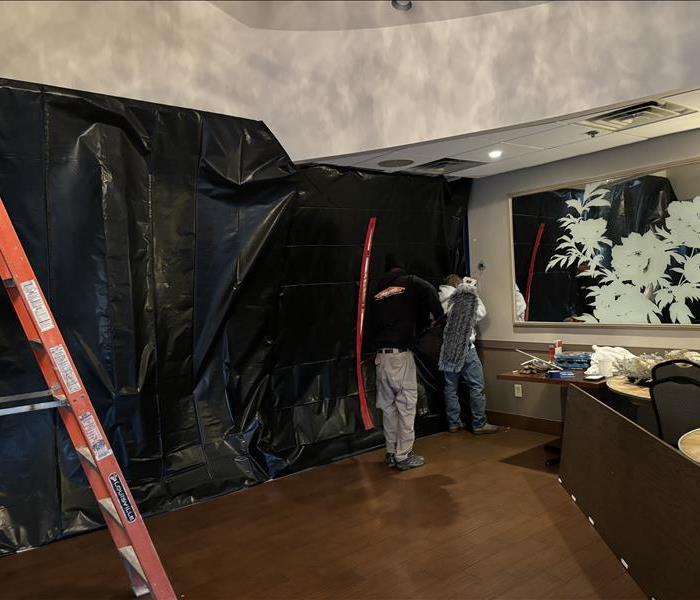 SERVPRO of Berlin/Williamstown is here to support you in protecting your home and assisting you with fire-related cleanup and restoration needs.
SERVPRO of Berlin/Williamstown is here to support you in protecting your home and assisting you with fire-related cleanup and restoration needs.
As a homeowner, ensuring the safety of your property should be a top priority. While many safety measures are taken inside the home, it's crucial not to overlook the importance of protecting your property from external threats, such as fires. One often underestimated but highly effective method is roof fireproofing.
Your roof is not only an integral part of your home's structural integrity, but it plays a vital role in safeguarding your property against various hazards, including fires. In this blog post, we'll delve into the reasons why roof fireproofing is essential and how SERVPRO® can help you fortify your home against potential disasters.
Preventing the Spread of Fire
Roof fires can quickly escalate and spread, causing extensive damage to your property. By investing in roof fireproofing measures, you create a barrier that can significantly slow down the progression of flames. This crucial time can be the difference between a manageable incident and a devastating disaster.
Enhancing Structural Integrity
A fire-damaged roof can compromise the structural integrity of your entire home. Fireproofing materials not only resist combustion but also strengthen the overall structure. SERVPRO offers advanced fire-resistant coatings and materials that add an extra layer of protection to your roof, ensuring it remains resilient in the face of potential threats.
Insurance Premiums and Property Value
Homes equipped with fire-resistant features, including roof fireproofing, often qualify for lower insurance premiums. Insurance providers recognize the reduced risk associated with fireproofed properties, leading to cost savings for homeowners. Additionally, fireproofing contributes to the overall value of your property, making it a wise investment for both safety and financial reasons.
Peace of Mind
Knowing that your home is fortified against the devastating effects of fires provides invaluable peace of mind. In the event of a fire, you can rest assured that your roof has an added layer of defense, giving you more time to evacuate and minimizing potential losses.
Why Choose SERVPRO for Roof Fireproofing
SERVPRO is a trusted leader in disaster recovery and restoration. Our team of experts is equipped with the latest technology and knowledge to assess your property's unique needs and provide tailored solutions. From fire-resistant coatings to advanced roofing materials, we offer a comprehensive range of services to ensure your home is well-protected.
Roof fireproofing is a proactive and effective measure to safeguard your home, family, and belongings from the destructive impact of fires. With SERVPRO as your partner in home protection, you can take confident steps toward fortifying your property and enjoying the peace of mind that comes with knowing you're prepared for the unexpected.
Mold in Rental Properties: Tenant and Landlord Responsibilities
3/20/2024 (Permalink)
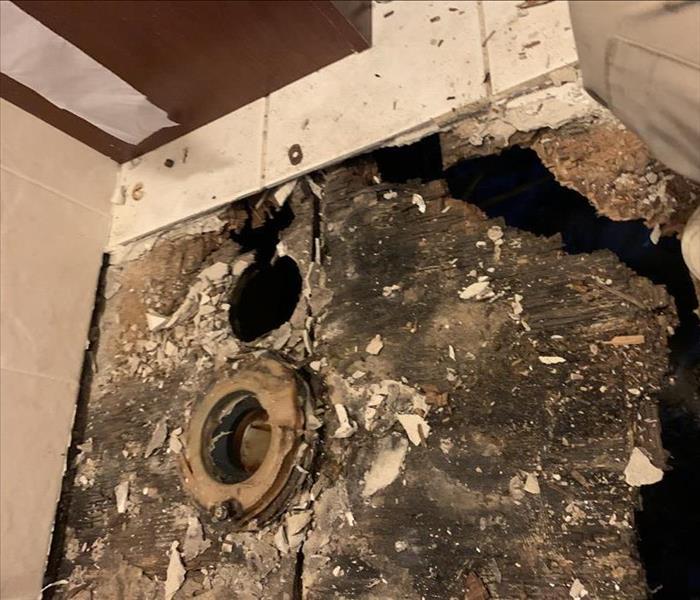 Trust SERVPRO® to efficiently and effectively address mold concerns and restore your rental property.
Trust SERVPRO® to efficiently and effectively address mold concerns and restore your rental property.
Mold in rental properties can be a significant concern, impacting both tenants and landlords. Understanding the responsibilities of each party is crucial for preventing mold growth, addressing issues promptly, and maintaining a safe living environment. In this blog post, we'll explore the responsibilities of tenants and landlords in dealing with mold in rental properties.
Tenant Vigilance
Tenants play a vital role in mold prevention through vigilance and awareness. Regularly inspect your living space for any signs of mold, such as musty odors, visible discoloration, or water stains. Report these concerns to your landlord promptly. Early detection can prevent the escalation of mold issues and contribute to a nicer living environment.
Proper Ventilation
Tenants can take proactive measures to minimize the risk of mold growth. Ensure proper ventilation by using exhaust fans in bathrooms and kitchens. Adequate ventilation helps reduce humidity levels, making it less conducive for mold to thrive. Additionally, allowing air to circulate by not blocking vents or air ducts can contribute to a drier environment.
Prompt Reporting of Issues
Tenants should promptly report any water leaks, plumbing problems, or signs of water damage to their landlords. Timely reporting allows landlords to address the root causes of moisture and take preventive measures against mold growth. Clear communication between tenants and landlords is essential for a swift response to potential mold issues.
Landlord Maintenance
Landlords are responsible for maintaining the property and addressing potential sources of moisture. Regular inspections, especially before new tenants move in, can help identify existing mold problems and ensure they are remedied. Landlords should also conduct routine maintenance, such as roof and plumbing inspections, to prevent water intrusion and mitigate the risk of mold growth.
Swift Response to Water Damage
Both tenants and landlords should prioritize a swift response to water damage. Whether it's a leaky roof, burst pipe, or appliance malfunction, immediate action is necessary to prevent mold from taking hold. Landlords should have an emergency response plan in place, and tenants should report water damage promptly for efficient remediation.
Professional Mold Remediation
If mold is discovered, landlords should hire professional mold remediation services like SERVPRO®. Certified mold remediation experts can assess the extent of the issue, develop a comprehensive remediation plan, and restore the property to a mold-free condition. Tenants should cooperate with the remediation process and follow any instructions provided by the professionals.
Open Communication
Maintaining open communication between tenants and landlords is crucial for addressing mold-related concerns effectively. Tenants should document their communication, including notifications of mold issues and responses received. Landlords should keep records of inspections, maintenance, and remediation efforts. This documentation fosters transparency and helps prevent disputes.
Preventative Measures
Preventing mold in rental properties requires a proactive approach. Landlords can take preventative measures such as installing proper ventilation systems, using mold-resistant materials, and addressing water issues promptly. Tenants can contribute by practicing good housekeeping habits, promptly reporting leaks, and ensuring proper ventilation in their living spaces.
A collaborative effort between tenants and landlords is essential for preventing and addressing mold issues in rental properties. By understanding and fulfilling their respective responsibilities, both parties can contribute to creating a safe and mold-free living environment. For professional mold remediation services, trust SERVPRO® to efficiently and effectively address mold concerns and restore your rental property.
How to Handle Commercial Water Damage
2/14/2024 (Permalink)
 As experts specializing in commercial restoration, our goal is to equip you with the necessary insights and steps to effectively manage emergencies.
As experts specializing in commercial restoration, our goal is to equip you with the necessary insights and steps to effectively manage emergencies.
Water damage in commercial spaces can be a sudden and distressing event, potentially disrupting operations and causing serious financial strain. As a SERVPRO® professional specializing in commercial water damage restoration, our goal is to equip you with the necessary insights and steps to effectively manage such emergencies.
Immediate Actions in Response to Commercial Water Damage
Upon discovering water damage in your commercial property, it's crucial to take immediate steps. Firstly, identify and stop the source of water intrusion. This might involve shutting off main water valves or seeking immediate assistance from the appropriate authorities. Furthermore, prioritize the safety of all individuals present in the affected area. If there are safety concerns, evacuate the building until it's deemed safe to return.
Assessing the Extent of Damage
Documenting the damage is essential. Take comprehensive photos or videos of the affected areas, inventory, and equipment. This documentation will play an important role in expediting insurance claims. Conduct a thorough evaluation of the damage to the structure and assess potential harm to walls, flooring, electrical systems, and the risk of mold growth due to the moisture.
Professional Assistance and Restoration Process
Quickly engage professional services like SERVPRO of Berlin/Williamstown to mitigate the damage. Our emergency response team is available round-the-clock to provide swift and expert assistance. Quick action is essential in minimizing further damage and initiating the restoration process. Upon arrival, our trained professionals will conduct a detailed assessment of the damage and devise a customized restoration plan tailored to your specific situation.
Efficient Restoration Strategies
Using advanced equipment, our team will quickly extract standing water, preventing additional damage and mitigating moisture-related issues. Industry-grade drying techniques are then employed to eliminate moisture from affected surfaces and materials.
Our specialized cleaning methods ensure thorough sanitation and restoration of affected areas, creating a clean and safe work environment. Then, restoration and reconstruction services are provided to return your property to its pre-damaged condition, ensuring a seamless recovery process.
Throughout the entire process, our SERVPRO® team will assist in coordinating with your insurance company, providing comprehensive documentation for a smoother claims process.
Why Choose SERVPRO® for Commercial Water Damage Restoration?
With decades of experience, our skilled professionals possess the expertise to handle any scale of commercial water damage. We employ cutting-edge technology and industry best practices for efficient and effective restoration, minimizing downtime for your business.
In Conclusion
When faced with commercial water damage, having a trusted partner like SERVPRO® can make all the difference. Contact us today for professional and efficient commercial water damage restoration services.
At SERVPRO of Berlin/Williamstown, we're committed to restoring your business and minimizing disruptions caused by water damage. Trust us to handle the restoration process, allowing you to focus on getting back to business as usual!
Getting Your Home Winter Ready: Be Prepared For Winter Storms
1/12/2024 (Permalink)
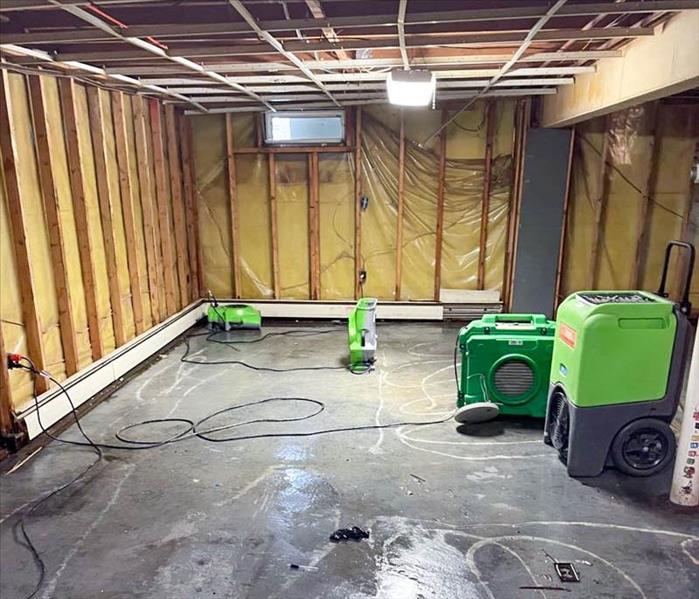 Getting your home ready for winter is all about being proactive. It's about being prepared for whatever Mother Nature throws your way.
Getting your home ready for winter is all about being proactive. It's about being prepared for whatever Mother Nature throws your way.
Hello from your friendly team at SERVPRO of Berlin/Williamstown! Today, we're talking about how to ready your home for winter. Winters can be tough, with brutal storms and icy conditions. This guide will help you prepare your property for the freezing months ahead, pointing out what you need to focus on to keep it safe.
1. Check Out Your Insulation
Good insulation is your best bet against the cold biting through your home. Check your attic, pipes, and walls to make sure they're well insulated. This will keep your house warm and prevent pipes from freezing. If in doubt, get a professional to do a check-up.
2. Check Your Roof and Gutters
Your roof is a crucial defense line against snow and storm. Regular checks should spot any problems that can lead to leaks or more serious damage. And remember, clean and secure gutters will stop water from pooling and causing issues with flooding or ice.
3. Seal Your Windows and Doors
Cracks or gaps around windows and doors can let in the cold and ramp up your heating bills. Make sure they're properly sealed - you could use weather stripping or window insulation kits. Door draft guards can stop that chilly breeze blowing under your doors.
4. Prepare Your Heating System
Your heating system is going to be working overtime in winter, so give it a thorough inspection. Clean and maintain fireplaces, heaters and furnaces, and make sure to change filters regularly. Get a professional inspection done once a year - it's worth it for peace of mind!
5. Get An Emergency Kit Ready
Winter storms can knock out power at the most inconvenient times. Prepare an emergency kit that's easy to grab when needed. It should include flashlights, batteries, warm blankets, bottled water, and some food items that can last you a few days. It's also a good idea to throw in a first-aid kit and essential meds.
Getting your home ready for winter is all about being proactive. It's about being prepared for whatever Mother Nature throws your way. If the worst does happen, remember that we are here at SERVPRO of Berlin/Williamstown to help with any kind of restoration services. Our experts can provide advice, tips, or hands-on assistance. Here's to keeping safe, warm, and ready this winter!
Strengthening Your Home's Armor: The Best Ways to Fireproof Your Roof
12/13/2023 (Permalink)
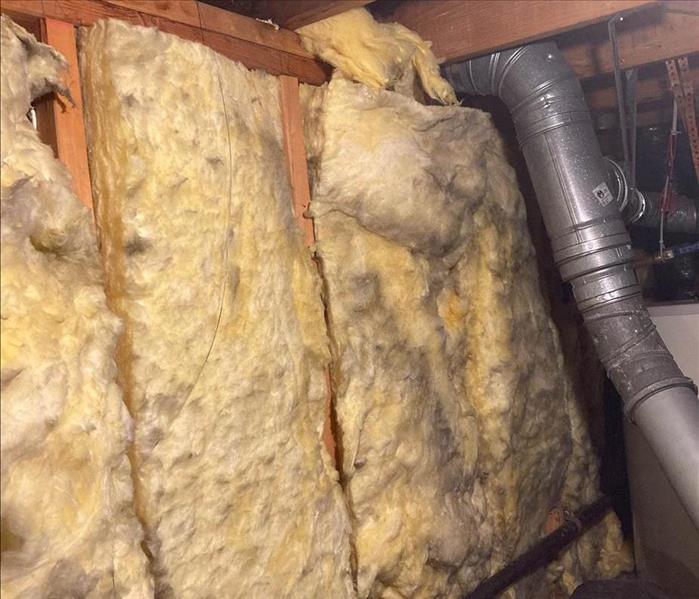 SERVPRO® of Berlin/Williamstown is here to support you in protecting your home and assisting you with fire-related cleanup and restoration needs.
SERVPRO® of Berlin/Williamstown is here to support you in protecting your home and assisting you with fire-related cleanup and restoration needs.
In today's blog, we'll delve into the essential topic of fireproofing your roof. Your roof is your home's primary defense against fire, and understanding how to fireproof it can make all the difference in protecting your property. Let's explore the top methods for fortifying your roof against the threat of fires.
Why Roof Fireproofing Is Crucial
Roof fireproofing is a proactive measure that can mean the difference between disaster and safety. Here's why it matters:
- Fire Safety: A fire-resistant roof can prevent flames from spreading into your home during a wildfire or from a neighboring property.
- Property Protection: Fireproofing your roof helps safeguard your home and valuable possessions, potentially saving you from costly repairs and replacements.
- Insurance Benefits: Many insurance companies offer discounts on homeowners' insurance for homes with fire-resistant roofing, making it a wise financial choice.
- Peace of Mind: A fireproof roof provides you and your family with an added layer of security, knowing you've taken steps to protect your home.
Top Ways to Fireproof Your Roof
- Choose Fire-Resistant Roofing Materials: Opt for Class A fire-rated roofing materials, which offer the highest level of fire resistance. Options include metal, concrete, and clay tiles.
- Apply Fire-Resistant Coatings: Fire-resistant coatings can be applied to existing roofs to enhance their fireproofing capabilities. These coatings serve as a barrier against flames.
- Maintain Your Roof: Regular roof maintenance is essential to ensure your fireproofing remains effective. Keep gutters clean, remove debris, and check for damaged or missing shingles.
- Install Ember-Resistant Venting: Use ember-resistant vents to prevent embers from entering your home through roof vents.
- Create Defensible Space: Keep trees and vegetation trimmed away from your roof and home. A clear, well-maintained space around your home can reduce the risk of a fire spreading to your roof.
- Seek Professional Guidance: Consult with roofing professionals experienced in fireproofing. They can assess your roof, recommend the best materials or coatings, and ensure that your home is well-protected.
Fireproofing your roof is a proactive step that offers significant advantages. By investing in fire-resistant roofing materials or coatings and staying diligent with maintenance, you're strengthening your home's defense against fire. Not only does it enhance the safety of your property and loved ones, but it can also lead to cost savings and peace of mind.
SERVPRO® of Berlin/Williamstown is here to support you in protecting your home and assisting you with fire-related cleanup and restoration needs. Remember that prevention is the best defense against fires, and roof fireproofing is a wise choice for homeowners who value security and peace of mind.
Who is Responsible for Mold in My Rental Property?
11/8/2023 (Permalink)
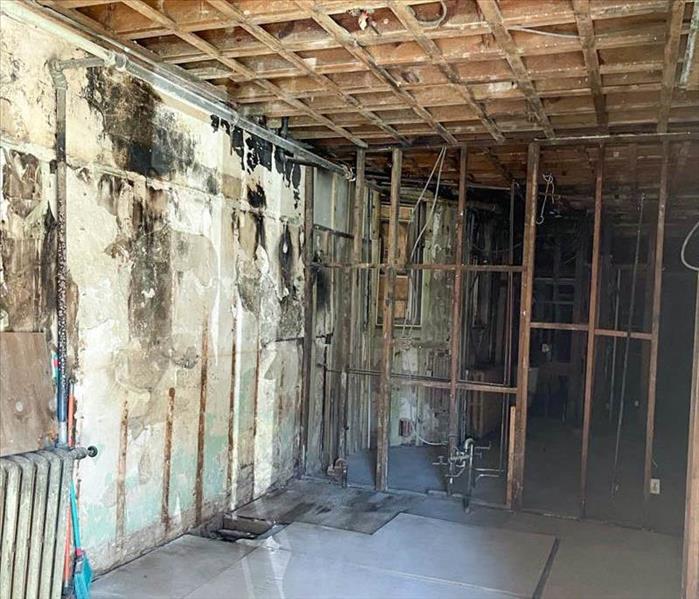 Landlords should ensure that the rental property is well-maintained to prevent conditions conducive to mold growth.
Landlords should ensure that the rental property is well-maintained to prevent conditions conducive to mold growth.
Maintaining a safe and comfortable living environment in rental properties is essential for tenants and landlords alike. One issue that can affect this balance is mold growth. In this blog, we will explore the responsibilities of both tenants and landlords concerning mold in rental properties. By understanding these roles, we can help ensure a harmonious and mold-free living experience for all.
Tenant Responsibilities
As a tenant in a New Jersey rental property, you play a vital role in maintaining a safe and mold-free living environment. Mold can be a persistent issue, but with the right practices, you can help ensure a comfortable and healthy space for yourself and fellow occupants. Here are some key tenant responsibilities to keep in mind:
- Routine Inspections: Tenants should conduct regular inspections of their rental units for signs of moisture or mold growth. Pay attention to areas like bathrooms, kitchens, and basements, which are more prone to dampness.
- Proper Ventilation: Ensure that the property is adequately ventilated. Use exhaust fans when cooking or showering, and keep windows open to promote air circulation, especially during humid weather.
- Prompt Reporting: If you notice any signs of mold, such as a musty odor or visible growth, report it to your landlord immediately. Timely reporting is crucial to address the issue promptly.
- Maintain Cleanliness: Keep the rental property clean and dry. Regular cleaning can prevent mold-friendly conditions from developing. Be especially diligent in areas susceptible to moisture, like the bathroom.
- Address Moisture Sources: If you identify leaks or water intrusion, inform your landlord promptly. Preventing water from entering the property is key to mold prevention.
Landlord Responsibilities
For landlords in New Jersey, providing a safe and comfortable living environment for tenants is not just good practice—it's a legal obligation. When it comes to mold issues, there are specific responsibilities that landlords must uphold to ensure tenant well-being and satisfaction. These responsibilities are not only essential for compliance with the law but also for fostering positive landlord-tenant relationships. Here are the key responsibilities that landlords in New Jersey must be aware of:
- Mold Disclosure: Landlords in New Jersey are legally required to disclose any known mold issues to prospective tenants. This should be part of the rental agreement or lease.
- Prompt Remediation: Landlords must take immediate action when mold is reported. This includes arranging for professional mold remediation services, such as those provided by SERVPRO®, to address the issue swiftly and effectively.
- Maintain Property: Landlords should ensure that the rental property is well-maintained to prevent conditions conducive to mold growth. This includes addressing any structural issues, such as leaks or damaged roofing.
- Proper Ventilation and Insulation: Landlords should install and maintain proper ventilation systems and insulation to minimize moisture buildup and temperature fluctuations within the property.
- Educate Tenants: It's beneficial for landlords to educate tenants about mold prevention measures and provide guidelines on how to maintain a mold-free environment.
In New Jersey, the responsibilities of tenants and landlords regarding mold in rental properties are well-defined. By understanding and fulfilling these responsibilities, we can create healthier and more comfortable living conditions for everyone involved. If you suspect mold in your rental property, contact SERVPRO® of Berlin/Williamstown for expert mold remediation services. We're here to help ensure that your rental property remains a safe and enjoyable place to call home.
Protecting New Jersey Commercial Spaces: Water Damage Risks and Effective Solutions
10/8/2023 (Permalink)
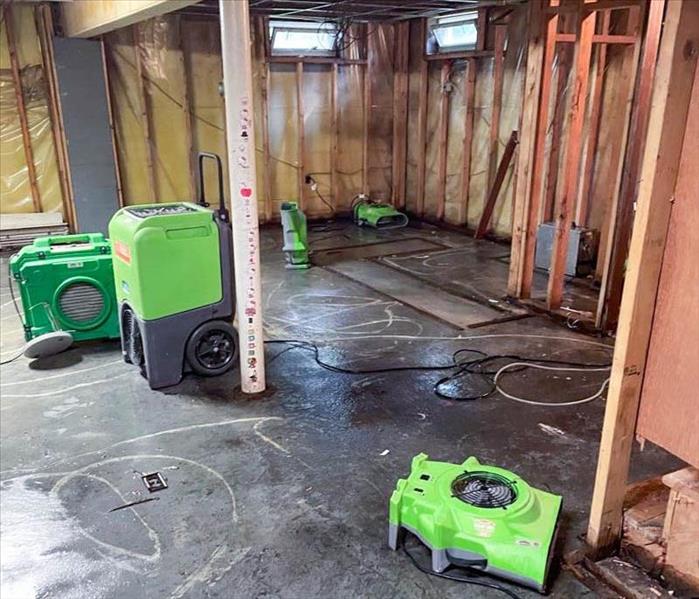 Timely action and preparedness can make all the difference in reducing damage.
Timely action and preparedness can make all the difference in reducing damage.
Water damage can pose significant challenges for commercial spaces, impacting businesses, employees, and clients alike. New Jersey, with its coastal areas and varying weather patterns, is no stranger to the risks associated with water damage. In this blog, we'll explore the unique risks commercial spaces face in the Garden State and provide actionable solutions to mitigate and address water damage.
Common Water Damage Risks in New Jersey Commercial Spaces
Severe Weather Events: New Jersey can experience intense storms, hurricanes, and heavy rainfall. These weather events increase the risk of flooding and water intrusion in commercial properties, particularly those located in flood-prone areas.
Plumbing Failures: Older plumbing systems, corrosion, and freezing temperatures can lead to burst pipes, leaks, and plumbing failures, causing extensive water damage.
Roof Leaks: Roofing issues, especially in buildings with flat roofs, can lead to leaks during rain or snow events. Over time, unnoticed leaks can result in significant damage.
HVAC Systems: Improperly maintained heating, ventilation, and air conditioning (HVAC) systems can contribute to moisture buildup, leading to mold growth and water damage.
Appliance Malfunctions: Commercial kitchens, laundromats, and other businesses with water-reliant appliances are at risk of leaks and equipment malfunctions that can lead to water damage.
Effective Solutions for Commercial Water Damage
Regular Maintenance: Implement a proactive maintenance schedule for your property. Regularly inspect roofing, plumbing, and HVAC systems to catch issues early.
Emergency Preparedness: Develop and rehearse an emergency response plan to minimize damage during severe weather events. Ensure that employees know how to turn off utilities.
Water Detection Systems: Invest in water detection systems that can alert you to leaks or flooding in real time. Early detection can prevent extensive damage.
Proper Drainage: Ensure that your property has proper drainage systems, including functioning gutters and downspouts. Ensure that water is directed away from the building's foundation.
Upgraded Plumbing: Consider upgrading older plumbing systems to reduce the risk of burst pipes. Insulate pipes to prevent freezing during colder months.
Commercial Restoration Services: Establish a relationship with a professional restoration service like SERVPRO. They can quickly respond to water damage emergencies and minimize downtime.
Water damage risks in commercial spaces in New Jersey are diverse, but with proactive measures and a reliable partner like SERVPRO® of Berlin/Williamstown, you can safeguard your business. Timely action and preparedness can make all the difference in reducing damage and ensuring the continuity of your operations. If you find yourself facing commercial water damage, SERVPRO® of Berlin/Williamstown is here to assist New Jersey business owners with expert cleanup and restoration services. We understand the unique challenges posed by water damage in commercial settings and are committed to helping you restore your property promptly and efficiently.
Storm Communication Network: Local Resources and Apps
9/5/2023 (Permalink)
Winter storms can bring hazardous conditions, including heavy snowfall, strong winds, and power outages. The Northeast region of the United States is no stranger to these severe weather events, and being prepared is crucial for staying safe and informed. In this blog post, we will discuss the Northeast's winter storm communication network and local resources and apps that can help us stay up-to-date and informed during these weather events.
National Weather Service
The National Weather Service (NWS) is your primary source of weather information during winter storms. They issue a variety of warning products, including winter storm warnings, watches, and advisories. The NWS website has an interactive map that shows the latest storm watches and warnings, enabling you to stay informed of the storm's trajectory and what you can expect in terms of weather conditions.
Local News Outlets
Local news outlets are also an essential resource for staying informed about winter storms. They typically provide up-to-date information on weather conditions, closures, and other related news. Checking in with your local television news station and radio stations in your area can help you stay informed about the storm's impact on your community.
Emergency Management Agencies
Many cities and towns have emergency management agencies that provide information regarding storm preparedness, timely updates, evacuations, and other vital information during winter storms. Residents can sign up for alerts and notifications about storms' developments, traffic and road conditions, power outages, and other public safety information. These agencies are also a great resource for any questions or concerns you may have during a winter storm.
Weather Apps
There are several weather apps that offer real-time winter storm alerts, tracking, and updates. Some of the popular apps include:
- The Weather Channel
- AccuWeather
- WeatherBug
- Dark Sky
These apps offer a wide array of features, including hour-by-hour forecasts, tracking the storm's path, radar imagery, and alerts if a storm is heading your way. They can help you stay informed of how the storm is affecting your area, whether you are at home or on the go.
Transportation Apps
Transportation apps such as Google Maps, Waze, and Transit can be important resources during a winter storm. They provide information on road conditions and traffic, helping you plan your travel routes or avoid hazardous conditions. Some of these apps can also provide notifications for public transportation changes and delays due to weather conditions.
Being prepared and informed during a winter storm is critical for staying safe and minimizing its impact on our daily lives. The Northeast's winter storm communication network is a vast network of local resources and apps that can help us stay up-to-date and informed about the storm's trajectory, weather conditions, and potential hazards. By utilizing these resources and apps, we can prepare ourselves, plan accordingly, and stay informed during a winter storm.
What to Throw Away After a Fire: A Comprehensive Guide
8/10/2023 (Permalink)
Experiencing a fire can be a devastating event, and once the flames are extinguished, the process of recovery and restoration begins. While it is natural to want to salvage as much as possible, there are certain items that should be thrown away after a fire to ensure safety and facilitate the restoration process. In this blog, we will provide you with a comprehensive guide on what items should be discarded and why.
Burned or Charred Items
Any items that have been burned or charred beyond recognition should be disposed of. These items are unlikely to be salvageable and can pose health hazards due to smoke residues, chemicals, or structural damage.
Perishable food that has been exposed to flames, smoke, or high heat should be discarded. Even if the packaging appears intact, the food may be contaminated and pose a health risk if consumed.
Opened or Damaged Food Products
Any food items that have been opened or damaged by fire, smoke, or water should be thrown away. Heat and smoke can compromise the integrity of packaging, potentially contaminating the contents.
Medications and cosmetics that have been exposed to fire, heat, or smoke should not be used and should be properly disposed of. These products can be dangerous when their composition has been altered or contaminated.
Fire-Damaged Appliances and Electronics
Appliances and electronics that have been directly affected by fire or intense heat should not be used and need to be discarded. Fire damage can compromise their electrical systems, posing a risk of malfunction or even electrical fires.
Furniture and upholstery that has suffered fire damage, such as charring, melting, or scorching, should be thrown away. These items can release harmful fumes and substances when burned or charred.
Smoke-Damaged documents
Paper documents and books that have been significantly smoke-damaged should be discarded. Smoke residues can infiltrate the pages and continue to release harmful substances, making them unsuitable for use or safe storage.
Items that have been exposed to prolonged water damage, such as excessive soaking or saturation, may become moldy or structurally compromised. These items should be thrown away to prevent further damage or health risks.
It is important to remember that safety should always be the top priority. If you have any doubts about the safety or suitability of any item after a fire, it is best to consult with professionals who specialize in fire damage restoration. They can guide you through the process of assessing and rectifying the damage, helping you make informed decisions about what should be thrown away and what can be salvaged. By following these guidelines, you can ensure a safer and more efficient recovery process after a fire.
How to Prevent Water Damage During Construction
7/28/2023 (Permalink)
Water damage can be a significant concern during construction projects, potentially leading to delays, increased costs, and structural issues. Taking proactive steps to prevent water damage is crucial for the success of any construction endeavor. In this blog post, we'll discuss essential strategies and practical tips to help you safeguard your project from water-related risks, ensuring a smooth construction process and minimizing potential damage.
Plan and Assess
Start by thoroughly evaluating the site's topography, drainage patterns, and potential water sources. Identify areas prone to flooding, standing water, or poor drainage. This information will guide your planning and enable you to implement appropriate preventive measures.
Create a comprehensive water management plan that outlines specific steps and strategies to mitigate water-related risks. Consider factors such as erosion control, sediment containment, dewatering methods, and stormwater management. Engage with experienced professionals, such as civil engineers or environmental consultants, to assist you in developing an effective plan tailored to your project's needs.
Install Effective Drainage Systems
Proper drainage systems are essential to redirect water away from the construction site. Install temporary or permanent drains, trenches, or ditches to channel water away from excavations, foundations, and vulnerable areas. Consider using geotextile fabrics or erosion control blankets to stabilize slopes and prevent erosion.
Protect Openings and Vulnerable Areas
Cover open areas, such as excavations or foundation openings, to prevent rainwater from accumulating inside. Use waterproof tarps, plastic sheets, or temporary roofing structures to shield exposed areas. Ensure that windows, doors, and other openings are adequately sealed to prevent water infiltration.
Implement Erosion and Sediment Control Measures
Erosion and sediment control measures are crucial to prevent soil erosion and the migration of sediments into nearby water bodies. Implement erosion control techniques such as silt fences, sediment basins, and erosion control blankets. Stabilize disturbed areas with vegetation or geosynthetic materials to minimize erosion risks.
Properly Store and Manage Construction Materials
Store construction materials, such as lumber, insulation, or drywall, in a dry and covered area. Protect them from rainwater or moisture, which can lead to damage and mold growth. Utilize plastic wraps or tarps to cover materials stored outdoors.
Maintain Good Housekeeping Practices
Promote a clean and organized construction site to prevent water-related issues. Keep drainage systems clear of debris and sediment buildup. Promptly remove standing water or accumulated rainwater from excavations or low-lying areas. Regularly inspect and clean gutters and downspouts to ensure efficient water flow.
Stay vigilant about weather forecasts and potential storms. Adjust construction activities and implement additional preventive measures when adverse weather conditions are expected. Temporary suspensions or protective measures may be necessary to minimize water damage risks.
Conduct Regular Inspections
Frequent inspections of the construction site are crucial to identify potential water-related risks. Regularly check drainage systems, erosion control measures, temporary seals, and vulnerable areas. Promptly address any issues or vulnerabilities to prevent further damage.
Encourage open communication and collaboration among all stakeholders involved in the construction project. Ensure that everyone understands their roles and responsibilities in preventing water damage. Encourage reporting of any water-related concerns promptly.
Preventing water damage during construction is essential for the success and longevity of your project. By implementing proactive measures such as thorough planning, effective drainage systems, erosion control, and regular inspections, you can minimize the risk of water-related issues. Prioritize communication and collaboration among all parties involved to ensure a collective effort in safeguarding the construction site. Remember, investing time and effort in preventing water damage upfront will save you valuable resources, time, and potential headaches in the long run.
 SERVPRO of Berlin/Williamstown is here to support you in protecting your home and assisting you with fire-related cleanup and restoration needs.
SERVPRO of Berlin/Williamstown is here to support you in protecting your home and assisting you with fire-related cleanup and restoration needs.



 24/7 Emergency Service
24/7 Emergency Service





